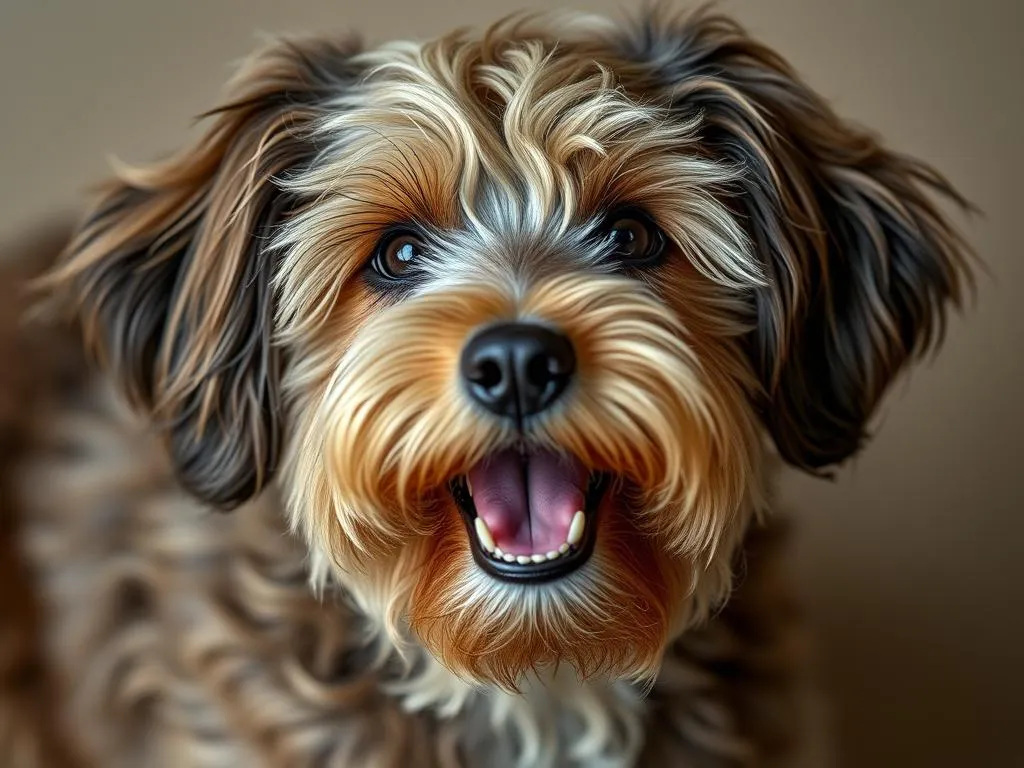
Introduction
Understanding dog breeds is essential for potential pet owners, as each breed comes with unique characteristics, care requirements, and personality traits. Among the myriad of breeds available today, the Doxiepoo stands out as an increasingly popular hybrid, resulting from the delightful combination of the Dachshund and the Poodle. This article will delve into the fascinating world of the Doxiepoo, exploring its physical characteristics, temperament, care needs, training, health, and more, providing a comprehensive guide for anyone considering welcoming this charming breed into their home.
What is a Doxiepoo?
A Doxiepoo is a hybrid dog breed created by crossing a Dachshund with a Poodle. This mix has gained popularity due to its adorable appearance, intelligence, and affectionate nature. Hybrid breeds like the Doxiepoo have surged in popularity as they often combine the best traits of both parent breeds, resulting in a dog that is not only cute but also adaptable to various lifestyles.
Brief History of the Parent Breeds
To fully appreciate the Doxiepoo, it’s helpful to understand the backgrounds of its parent breeds:
-
Dachshund: Originating in Germany, the Dachshund was initially bred to hunt small animals like badgers. Their long bodies and short legs make them excellent diggers and burrowers. They are known for their courageous and playful demeanor.
-
Poodle: The Poodle, originally a water retriever, is well-known for its intelligence and hypoallergenic coat. Available in three sizes (standard, miniature, and toy), Poodles are highly trainable and excel in various dog sports and activities.
The combination of these two breeds creates a unique dog that inherits diverse traits from both sides, making the Doxiepoo a wonderful addition to many households.
Physical Characteristics of Doxiepoos
The physical appearance of a Doxiepoo can vary widely due to the genetic diversity of its parent breeds. However, there are some common traits that many Doxiepoos share.
Size and Weight
Doxiepoos typically weigh between 8 to 30 pounds and stand around 10 to 15 inches tall, depending on whether they take more after their Dachshund or Poodle parent. Smaller Doxiepoos often come from miniature Poodles, while larger ones may lean towards standard Poodles.
Coat Types and Colors
The coat of a Doxiepoo can range from curly to wavy, reflecting the Poodle’s coat, or be more straight and coarse like the Dachshund’s. Common colors include black, brown, cream, and various combinations, often leading to a striking appearance. The Poodle’s influence often results in a lower shedding coat, which can be beneficial for allergy sufferers.
Distinctive Features
The Doxiepoo often showcases distinctive features from both parent breeds, such as:
- Ears: Typically long and floppy, reminiscent of the Dachshund’s ears.
- Body Structure: A longer body similar to the Dachshund but with a more compact build influenced by the Poodle.
- Eyes: Expressive and dark, often giving them a playful and intelligent look.
The unique blend of these features contributes to the Doxiepoo’s charm and appeal.
Temperament and Behavior
The temperament of a Doxiepoo often reflects a delightful mix of the parent breeds, making them engaging and loving companions.
General Temperament Traits
Doxiepoos are typically friendly, affectionate, and playful. They tend to bond closely with their families and can be quite loyal pets. Their intelligence, inherited from the Poodle, makes them eager learners, while their playful nature comes from the Dachshund side.
Comparison to Parent Breeds
-
Dachshund Traits: Doxiepoos may exhibit the Dachshund’s playful and sometimes stubborn nature. They can be independent thinkers, so consistent training is essential.
-
Poodle Traits: From the Poodle, they inherit a higher level of intelligence and trainability, making them quick learners who enjoy mental challenges.
Socialization Needs
Socialization is crucial for Doxiepoos to ensure they develop into well-rounded dogs. Early exposure to different people, pets, and environments can help mitigate any potential behavioral issues.
Common Personality Traits
Doxiepoos are known for their loyalty and playfulness, often thriving in active households. They love to engage in playtime and are generally friendly with children and other pets, making them great family dogs.
Care and Maintenance
Caring for a Doxiepoo involves several important aspects, including grooming, diet, exercise, and health considerations.
Grooming Needs
Grooming is essential for maintaining a healthy coat. Depending on the coat type, Doxiepoos may require:
- Regular brushing (at least once a week) to prevent matting, especially for those with curlier coats.
- Occasional professional grooming to keep their coat looking its best.
- Bathing as needed, generally every 4 to 6 weeks.
Dietary Requirements
A balanced diet is crucial for a Doxiepoo’s overall health. High-quality dog food that meets their nutritional needs is recommended. Portion control is important to prevent obesity, especially as this breed can be prone to weight gain.
Exercise Needs
Doxiepoos are moderately active and require daily exercise to stay healthy and happy. Activities can include:
- Walks (20 to 30 minutes daily)
- Playtime in a secure yard
- Interactive games and mental stimulation
Health Considerations
While Doxiepoos are generally healthy, they can inherit health issues from their parent breeds. Common concerns include:
- Hip dysplasia
- Allergies
- Ear infections (especially in those with floppy ears)
Regular vet check-ups and vaccinations are vital for early detection and prevention of health problems.
Training a Doxiepoo
Training a Doxiepoo is essential for ensuring good behavior and a happy pet. Early socialization and consistent training methods can lead to a well-adjusted dog.
Importance of Early Socialization and Training
Starting training and socialization early helps Doxiepoos develop confidence and reduces the risk of behavioral issues later in life. Exposing them to various environments, people, and other animals is beneficial.
Recommended Training Methods
Positive reinforcement is the most effective training method for Doxiepoos. Reward-based training helps build trust and encourages learning. Techniques can include:
- Treats for positive behavior
- Praise and affection
- Clicker training for clear communication
Common Behavioral Challenges
Some Doxiepoos may display stubbornness, leading to challenges during training. If issues arise, be patient and consistent, and consider seeking help from a professional trainer if needed.
Tips for Successful Housebreaking
Housebreaking a Doxiepoo can be achieved with consistency and patience. Here are some tips:
- Establish a regular routine for bathroom breaks.
- Use positive reinforcement when they go outside.
- Be patient; accidents may happen, but avoid scolding.
Doxiepoo Health and Lifespan
The lifespan of a Doxiepoo typically ranges from 12 to 15 years, depending on genetics and overall care.
Common Health Issues
As with any breed, being aware of potential health issues is important. Common concerns for Doxiepoos include:
- Hip dysplasia
- Allergies
- Eye issues (like cataracts)
Importance of Regular Vet Check-ups
Regular vet visits are crucial for maintaining a Doxiepoo’s health. Routine check-ups, vaccinations, and dental care can help prevent serious health issues.
Preventative Care Tips
Providing preventative care can significantly enhance your Doxiepoo’s quality of life. Regular exercise, a balanced diet, and grooming can all contribute to a healthier, happier dog.
Living with a Doxiepoo
Living with a Doxiepoo can be a rewarding experience, especially for those who enjoy an affectionate and playful companion.
Compatibility with Families and Other Pets
Doxiepoos are generally good with children and can thrive in multi-pet households. Their friendly nature makes them adaptable and eager to socialize.
Ideal Living Environment
Doxiepoos can adapt to various living situations, including apartments and houses. However, they do require regular exercise, so access to nearby parks or safe outdoor spaces is beneficial.
Considerations for First-time Dog Owners
For first-time dog owners, the Doxiepoo can be an excellent choice. Their trainable nature and loving demeanor make them suitable for families and individuals alike. However, be prepared for their grooming needs and the time commitment required for training and exercise.
Activities and Mental Stimulation
Keeping a Doxiepoo mentally stimulated is vital for preventing boredom and behavioral issues. Engage them with:
- Interactive toys
- Puzzle games
- Agility training or obedience classes
These activities not only provide physical exercise but also challenge their minds.
Conclusion
The Doxiepoo is a delightful hybrid breed that combines the best characteristics of the Dachshund and Poodle. With its charming appearance, friendly temperament, and manageable care needs, it’s no wonder this breed has captured the hearts of many dog lovers. From their grooming requirements to training needs and health considerations, understanding the Doxiepoo can help ensure a happy and fulfilling companionship. For potential owners, this breed can be an excellent match for various lifestyles, offering love, loyalty, and joy.
Frequently Asked Questions (FAQs)
What is the average cost of a Doxiepoo?
The cost of a Doxiepoo can range from $500 to $2,000, depending on the breeder and the dog’s lineage. Adoption from shelters may also be an option, often at a lower cost.
Are Doxiepoos hypoallergenic?
While Doxiepoos tend to shed less than many other breeds, they are not entirely hypoallergenic. Individuals with allergies should spend time with the breed before committing to ownership.
How often should I groom my Doxiepoo?
Grooming frequency depends on the coat type but generally involves brushing at least once a week and occasional professional grooming to maintain a healthy coat.
What kind of training do Doxiepoos respond to best?
Doxiepoos respond best to positive reinforcement training methods. This approach encourages learning through rewards, enhancing the bond between pet and owner.









